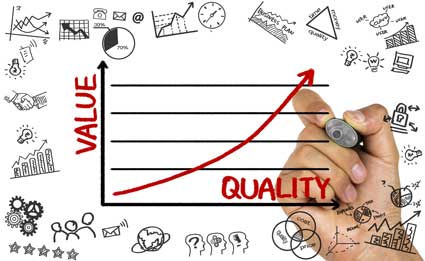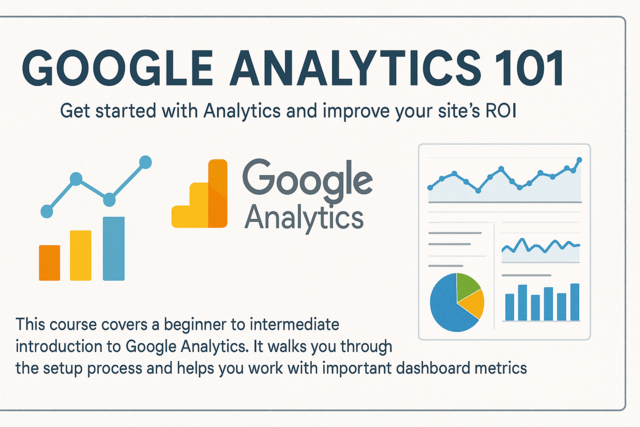With Excel 2003, you can add elements such as images, art and diagrams.
You can enter these elements into Excel simply to associate them with a particular piece of information. For instance, if you were creating a catalogue of items in a museum, you might want to include a picture of the item next to its description. But you can also use them to make your projects more visually appealing.
Adding Images
You can add images into MS Excel from a file or directly from a scanner or camera. We'll show you how to add an image from a file first.
There are a number of ways to do this. The first is to select the cell you'd like to place the picture into, then click Insert > Picture > From File�
An Insert Picture dialog box will open. Navigate to the folder that contains the picture you'd like to insert, select the picture, and double-click it or click Insert.
When you insert a picture into Excel, the Picture toolbar automatically opens. This toolbar contains the tools you'll need to modify an image or element. We'll talk about it more later on in this lesson.
Another way to insert a picture from a file is to click the Insert Picture From File button in the Drawing toolbar in the lower left hand corner of the screen.
The Insert Picture dialog box will open. Select the picture and click Insert.
Note: If the Drawing toolbar is not visible at the bottom of your Excel window, you can turn it on by clicking the drawing button in the standard toolbar.
The Insert Picture From File button is also available in the Picture toolbar.
As we said earlier, you can also insert pictures and images directly from a scanner or a camera. To do this, you must first make sure the device is connected to your computer and turned on. Then just click Insert > Picture > From Scanner or Camera.
In the Insert Picture from Scanner or Camera dialog box, select the desired device from the menu. The Resolution options are only available when a scanner is selected. Use the Web Quality setting if the worksheet is to be viewed only on a screen. This creates a lower resolution, quicker loading image. If the worksheet will be printed, use the Print Quality setting.
Click Custom Insert, select the pictures you want to place into your document, then click Get Pictures. Use the link in the bottom left hand corner of the box to view picture information before you insert it into your document.
Modifying Images
As we mentioned earlier, whenever you insert a picture into MS Excel, the Picture toolbar automatically opens. This gives you all the tools necessary to modify your image in one convenient place. Or at least all the tools available in MS Excel. Just remember, Excel isn't Photoshop. You won't be able to remove the image of Abraham Lincoln from Mount Rushmore and insert your own. But you will be able to crop it, compress it, and adjust the color and contrast and more.
So let's take a closer look at the picture toolbar and explore some of the tools available to you in MS Excel.
Note: All of the function available on the toolbar are also available in the Format Picture dialog box. To access it, double click on the picture. We'll talk more about the Format Picture dialog box later on in this lesson.
Adjusting Color and Contrast
We've already explained how to use the Insert Picture From File button , so let's take a look at the button beside it. This is called the Color button. It gives you four ways to adjust the color of a picture:
� Automatic: this setting uses the color setting of the original picture and is the default selection in MS Excel.
� Grayscale: Converts colors to shades of gray. For example, a dark color becomes dark gray; a lighter color becomes a light gray.
� Black & White: This button converts dark colors to black and white colors to white and gives us a high-contrast picture.
� Washout: This removes all color and leaves a faded impression.
Below is an example of how each setting appears in MS Excel. From left to right, we have Automatic, Grayscale, Black & White, and Washout.
To the right of the Color button on the Picture toolbar are the Contrast buttons They adjust the contrast up or down, just as the Brightness buttons right beside them adjust the brightness up or down.
Cropping an image
You might be familiar with the Crop tool from Photoshop or another photo-editing program. This tool performs the same task (kind of like cutting the edges off a picture with the paper cutter at Kinko's) but in a slightly different manner. In Photoshop, you'd drag the crop tool across your picture to select the parts you want to keep. In MS Excel, you drag the Crop marks at the edges of the picture. Let's see an example of how it works.
Below we've selected a picture in MS Excel and clicked the Crop button in the Picture toolbar. You can see the black crop marks at each corner of the picture.
To crop the picture, click one of the crop marks and drag it to the desired location. In this case, we will crop the picture to include only Abraham Lincoln's face.
To turn the crop function off, click the Crop button again.
You can also use values to crop a picture by using the Format Picture dialog. To access the Format Picture dialog, double click on the picture. To crop a picture by entering values, select the Picture tab. Enter Values, then click Okay.
Rotating an image
To rotate an image, we'd click the Rotate left 90� button . This rotates the picture 90� to the left. You can also rotate an image by selecting it and placing your mouse over the handle at the top. When the mouse pointer turns into a circular arrow P, just click and drag the top of the picture either right or left to rotate it.
You can also rotate the picture by selecting the size tab in the Format Picture dialog box and entering a value. In the following example, we have entered 12. This will rotate the picture 12 degrees to the right. If we wanted to rotate it to the left, we would enter a negative number, such as -12.
Changing the Borders of a Picture or an Image
The next button on the Picture toolbar is the Line Style button . This refers to the border around the outer edge of a selected element. You learned about cell boarders in an earlier lesson, and this is no different. To change the border of an image, you can click this button in the toolbar, and then select the desired weight (thickness) of the line. You can also change the border style in the Colors and Lines tab of the Format picture dialog box. Using this method, you can also easily change the color and style of the line as well.
Compressing a Picture
You can reduce the file size of a picture by using the Compress Picture command. This reduces the resolution of the picture for quicker downloading and removes unnecessary information. For instance, when you crop a picture, the cropped portions of a picture are still stored in the file, they have only been "hidden."
Find the Compress Picture button on the toolbar, to the right of the Line Style button . When you press it, you will see the Compress Picture dialog box:
Choose the options you want, and click OK. The Web/Screen option reduces picture resolution to 96 dpi, or dots per inch. This helps increase the loading speed of your document when you view it on the web or when you open it.
The next button over is the Format Picture button. This button brings up the Format Picture dialog box, which we've already discussed. All the Picture toolbar really does is simplifies access to each of the functions in the Format Picture dialog.
With the Select Transparent Color button, you create a transparent area in a picture. To do this, click the button and select the color you want to make transparent by clicking on it in the picture. Below we can see this function in action. The upper picture is the original photograph; below it, we've made the blue in the sky behind the mountain transparent. Note the cell lines showing through.
Use the Reset Picture button on the toolbar to reset the picture to its original size and format.
Adding WordArt
You might be familiar with WordArt from Excel's sister program Word. You insert WordArt into Excel much the same as you insert a picture. Click Insert > Picture > WordArt.
Or select the WordArt icon in the Draw toolbar at the bottom of the worksheet window.
You will then see the WordArt gallery.
Select a style and click OK.
Another dialog box will open where you will enter your own text.
Select a font and a font size, and then click the text box and begin typing. We're going to write "Microsoft Excel" and see how it appears in our workbook. Click OK when finished.
When you insert WordArt into MS Excel, the WordArt toolbar will automatically open. Just like the Picture toolbar, this gives us easy access to all the functions associated with WordArt. Let's take a closer look at it.
We're already familiar with the Insert WordArt icon so let's look at the Edit Text function. We'd use this, of course, to edit the text in our WordArt. When we click it, the Edit WordArt Text dialog box reopens. If we wanted to change our text, we'd simply select the Text box, make our changes, and click OK.
To the right of that is the WordArt gallery button . When we click this, the WordArt gallery reopens. From here we can change the style of our WordArt.
We're already familiar with the Format button. Click this to see the Format WordArt dialog box.
As you can see it is almost identical to the Format Picture box. From here you can alter the WordArt's size, color, adjust properties, etc.
Use the WordArt Shapes button to change the shape of your WordArt.
We'll select Wave1 and see the result.
Use the Same Letter Height button to make all of the characters in your text the same height.
The Vertical Text button, reorients the text so it runs vertically.
You should already be familiar with the text alignment and character spacing functions which work the same as for ordinary text.
Inserting AutoShapes
AutoShapes are basic shapes such as rectangles and circles and lines. They can also be arrows, connectors, flowchart symbols, and stars. Click the AutoShapes button in the draw toolbar in the bottom left corner of Excel to see a list of AutoShape categories.
We're going to draw an oval by selecting the oval button in the Draw toolbar.
We will then drag our shape to the desire size and release the mouse button.
After you insert an AutoShape Excel, you can manipulate it like any other object. You can resize it, rotate it, and change the transparency and stroke size. There isn't a toolbar associated with an AutoShape, but you can pull up the Format AutoShape box by right clicking on the AutoShape and selecting Format AutoShape. The Format AutoShape dialog is nearly identical to the Format Picture dialog.
Adding Clip Art
There are two was to insert clip art into Excel. The first is to click Insert > Picture > Clip Art. And the second is to click the AutoShapes button in the Draw Toolbar and select More AutoShapes.
A Clip Art window will open in the right side of the Excel window.
You can enter terms to search for Clip Art based or you can simply browse the selection. When you've found the Clip Art you want, double click on it, or move your mouse over it and select the arrow that appears along the right edge of it. Then click Insert. Because Clip Art acts like an AutoShape, you can manipulate and format it the way you would any other AutoShape.
Creating a Hyperlink
If you've spend any time at all on the Internet, you're no doubt aware of hyperlinks. Anytime you click text to browse to another webpage, you are seeing hyperlinks in action. Really, that's all hyperlinks are--short cuts to another location. You can create a hyperlink to another file on your computer, to an email address, even to another location within your worksheet. What 's more, existing text, shapes, or images can represent hyperlinks.
To create hyperlink, click the text or image you want to use for the hyperlink, then click the Hyperlink button in the toolbar. (You can also click Insert > Hyperlink or right click on the text or image and select Hyperlink.)
This is what you will see:
You can browse to the destination file or you can enter it into the Address bar. If the destination is to be somewhere in the current workbook, select Place is This Document. Then select the location (usually a cell) then click OK.
Embedding an object
An embedded object is similar to a hyperlink, except instead redirecting you to a new location, it simply inserts that location into your workbook.
To embed an object into Excel, select a location, then click Insert > Object. The Object dialog box will open.
Type the source file or locate it using the Browse button and then click okay. If you check the Link to file box, you will create a link between the object and its source file. This means that any alteration to the source file will be reflected in your document.
A linked or embedded object (such as an image inserted into a worksheet) can be displayed exactly as it does in the source program, or it can be displayed as an icon. If the workbook will be viewed online, converting large images to icons will reduce the amount of display space it occupies. Viewers can then double-click the icon to display the full image or information.
To convert an embedded object as an icon, select the Display as icon box.
Then Click OK.






























